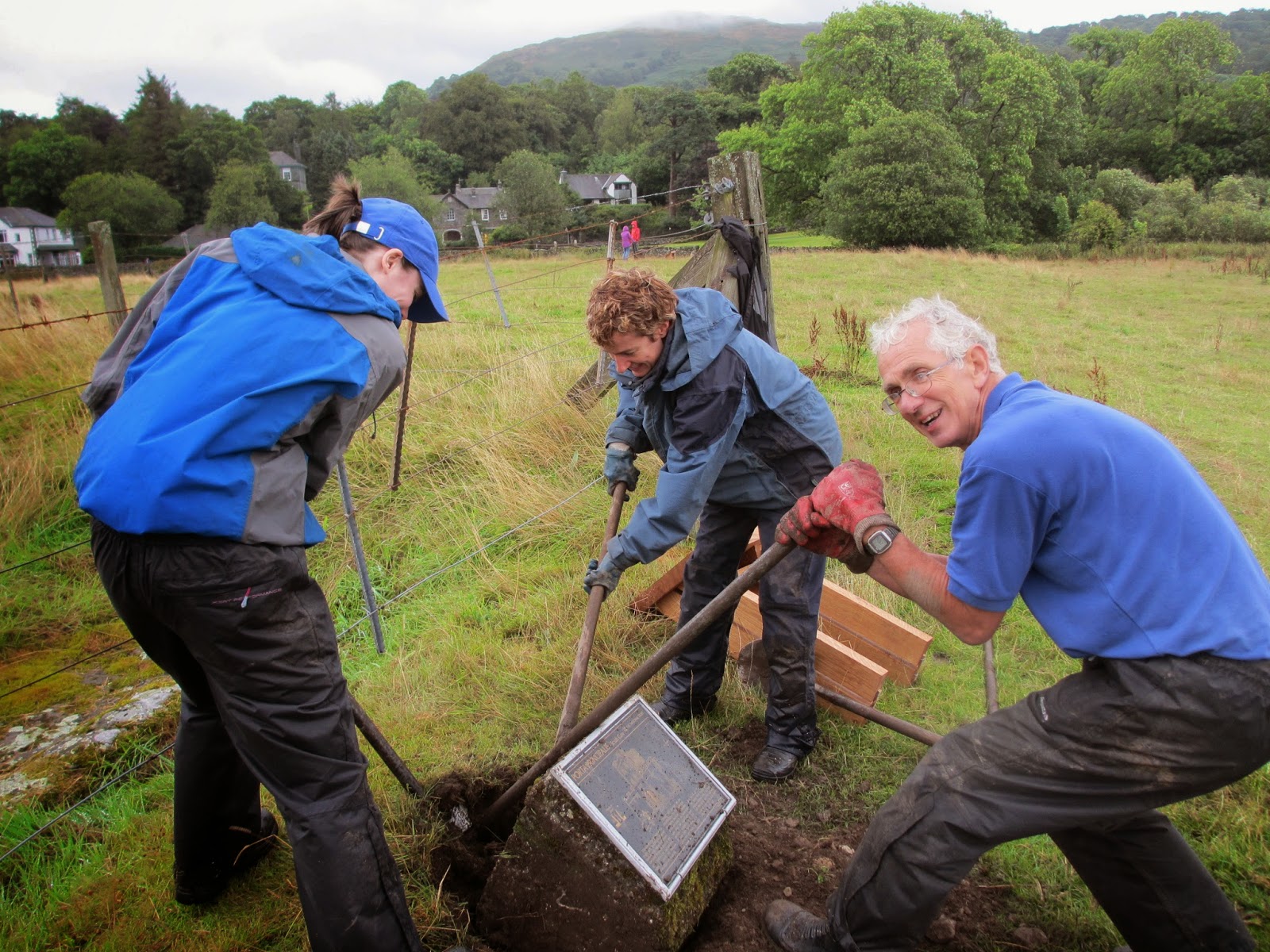Ambleside Roman Fort, (aka... Galava), is situated at the northern end of Windermere. It is understood to have been built in the second century during Hadrian's reign. 500 infantry men (a cohort) were stationed there to guard the road between Brocavum (Brougham) and Glannaventa (Ravenglass).
With its large granaries, the fort was also likely to have been used as a supply base.
Over the course of two weeks in the summers of 2011 and 2012, teams of volunteers, NT conservation builders, NT rangers and archaeologists worked together to consolidate the remains of the fort.
Windermere Reflections provided funding for the entire project so thanks to them the work was able to go ahead.
CONSOLIDATION WORK.
The indistinct foundations prior to consolidation work.
Consolidation work consists of initially removing the
turf covering the low walls that remain of the fort.
The next stage is to scoop out the earth between the
stones as seen in the left hand side of the image.
Surplus soil and turf was used to repair erosion
scars on the lake shore.
Scooping out and a find!
The final stage is to put a stone capping in place, bonded
with a lime rich mortar or cement. The word cement is
derived from "opus caementicium" a term that the Romans
used to describe masonry that resembles concrete; it was
made from crushed rock with burnt lime used as a binder.
Celebrating after completing the work.
Consolidation not only strengthens the remains, it also
gives a clearer indication of how the fort was laid out.
IMPROVING ACCESS.
A new gateway was installed, through the boundary wall,
linking Borrans Park and the Roman Fort.
A rock breaker was needed to tackle a large boulder that
was in the way.
With the gate and the cage in place the wall can be rebuilt
or coyned up on either side.
The gate is designed for large mobility scooters,
improving access for all.
GEOPHYSICS SURVEY.
Geophysical survey of the surrounding area took place
in the summer 2013.
NEW INTERPRETATION.
The final stage of the project was to remove the old signs and
put in place splendid new interpretation signs.
The signs newly arrived at Borrans Barn.
The oak signs were treated with several coats
of protective teak oil before installation.
Jamie Lund, National Trust archaeologist and project
leader, breaking up one of the old concrete plinths on
which the old signs were mounted.
leader, breaking up one of the old concrete plinths on
which the old signs were mounted.
Cumbria National Trust Volunteers digging out more
of the concrete plinths.
of the concrete plinths.
The large heavy plinth is out of the ground
and awaiting removal.
Six of these concrete plinths were dug out by Trust
rangers and volunteers. A big job in itself! To avoid
overloading the trailer only two were taken away at a time.
and awaiting removal.
Six of these concrete plinths were dug out by Trust
rangers and volunteers. A big job in itself! To avoid
overloading the trailer only two were taken away at a time.
The old...
and the new!
Digging holes for one of the larger signs.
The new lectern sign is in position and Cumbria NT
volunteers are about to replace the turf around its base.
volunteers are about to replace the turf around its base.
with many more people visiting the Roman Fort.
Altogether 6 signs were put in position on National Trust
land and 2 signs on SLDC land at Borrans Park.
land and 2 signs on SLDC land at Borrans Park.


























No comments :
Post a Comment